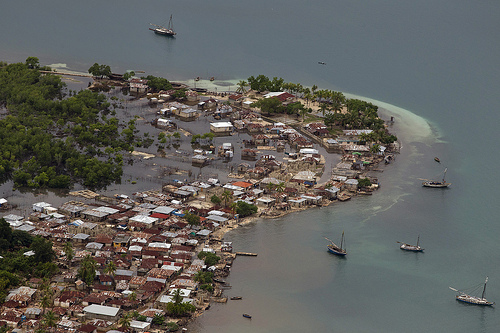By Nadine Moedt (The Cascade) – Email
Print Edition: November 21, 2012
Tour operator Gray Line has begun the inevitable disaster tours around areas of New York most heavily hit by hurricane Sandy, hardly giving residents a chance to catch their breath after the storm. Two days after many residents lost everything, the wreckage that once was their lives is being featured on many a disaster tourists’ Facebook page.
There are countless of examples of disasters that turned into a lucrative business for tourism companies; the wrecked cruise ship Costa Concordia, the devastation of New Orleans, ground zero. When does disaster tourism change from an act of solidarity with the victims to a voyeuristic motivation? These tourists are not taking tours to pay respect to the lives destroyed by these disasters; they are simply observing, the same as one would observe the Eiffel tower, or the pyramids.
Why do we have such a morbid interest in destroyed lives? A look at “ruin porn” sheds some light on the question. Ruin porn is the fascination many experience in looking at and photographing abandoned and dilapidated urban buildings. Imagery of old schools, factories and hospitals inspire romantic and nostalgic feelings; it goes back to mortality, passing time and lost lives. Detroit is a popular place for ruin porn addicts; whole blocks, derelict and crumbling, and the abandoned Motor city make the perfect setting for avid photographers.
Tim Edenser, a professor of geography at Manchester Metropolitan University who studies the appeal of urban ruins, said to The Huffington Post that these areas present “an escape from excessive order.” Images from these places make viewers “see and feel things [they] can’t in the ordinary world.” Ruin porn in this sense is alike to disaster tourism; people escape the routine and “excessive order” of their lives, briefly stepping into the ruin of others’ for a quick thrill.
The “porn” comparison suggests a rather disturbing trend. Porn is a trivialization of something deeper and more complex, whether it is a physical and emotional connection with another sexual being or the circumstances that results in the desertion of an urban location. In disaster tourism it is the aestheticisation of devastation.
Also similar to porn is the possible connection to exploitation; images of destruction titillate viewers but do not serve up the reality behind the images, the history of socio-economic exploitation in Detroit is one such example. While on the surface the devastation is clear, many do not see the horror that is implicit in the scene, be it an abandoned school, or the wreckage that results from a disaster.
If these tours generated much needed relief funds to the communities afflicted, there would be some shred of decency, some excuse to gawk at other people’s misery. But more often profits only go to the company that runs the tours.
Disaster tourism is no different than following the tabloid stories on a movie star’s downwardly spiralling life. As indecent, insensitive and voyeuristic as it may be, there’s money to be made; it seems impossible to avoid.


